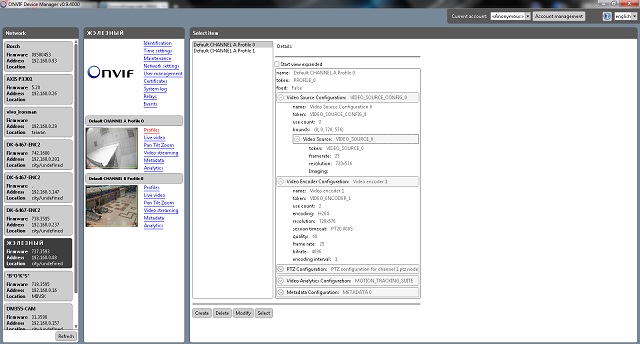ONVIF profiles make it easy to recognize how ONVIF conformant devices and clients are compatible with one another. An ONVIF profile has a fixed set of features that must be supported by a conformant device and client. It ensures that a client that conforms to Profile S, for example, will work with a device that also conforms to Profile S. There are also conditional features, which are features that shall be implemented by an ONVIF device or ONVIF client if it supports that feature in any way, including any proprietary way. The underlying functions of the features included in a profile are defined in the ONVIF Network Interface Specifications.
The User Guide describes the product installation, video encoder, network and analytics configuration, the software update and troubleshooting. Thus, the document is intended for the personnel responsible for administrating CCTV systems and separate network video surveillance devices with the help of ONVIF Device Manager.
ONVIF profiles make it easy to recognize how ONVIF conformant devices and clients are compatible with one another. An ONVIF profile has a fixed set of features that must be supported by a conformant device and client. It ensures that a client that conforms to Profile S, for example, will work with a device. ONVIF compliant devices are recommended to support password length of at least 28 bytes, as clients may follow the password derivation mechanism which results in 'password equivalent' of length 28 bytes, as described in section 3.1.2 of the ONVIF security white paper.
Clients and devices can support more than one ONVIF profile; for instance, a network camera with local storage can conform to both Profile S and G.

Conformance to profiles is the only way that ensures compatibility between ONVIF conformant products; therefore, only registered products with conformance to a profile are considered to be ONVIF conformant.
Profiles A and C are relevant for access control systems. Profiles G, Q, S and T are relevant for video systems.
To ensure effective interoperability of IP-based physical security products, ONVIF provides specifications referencing state-of-the-art cybersecurity standards. Compliance to regulations, however, are outside the scope of ONVIF.
Manufacturers, system architects and/or integrators are responsible for checking regulatory and other local requirements, ensuring solid product and system design, and implementing the appropriate security level for the use case.
ONVIF Profile Feature Overview
Click on the ONVIF Profile Feature Overview v2.3 (Dec. 2019) to get an overview and a comparison of the features supported by all ONVIF profiles, and whether the features are considered mandatory (M) or conditional (C) for a conformant device or client. This allows you to determine at a glance the set of ONVIF profiles that may be of interest to you. You can then search on the ONVIF Conformant Product page for device and/or client products that implement those profiles.
Onvif Device Tool
Video
ONVIF Profile Policy
Onvif Device Manager For Mac
The following Profile Policy document details the underlying principles of the profile concept. It explains how and why a new profile can be proposed, a step-by-step description for the creation, modification and deprecation process, as well as rules to ensure the profile concept stays consistent over time. ONVIF Profile Policy v2.0 (Sept. 2014)
